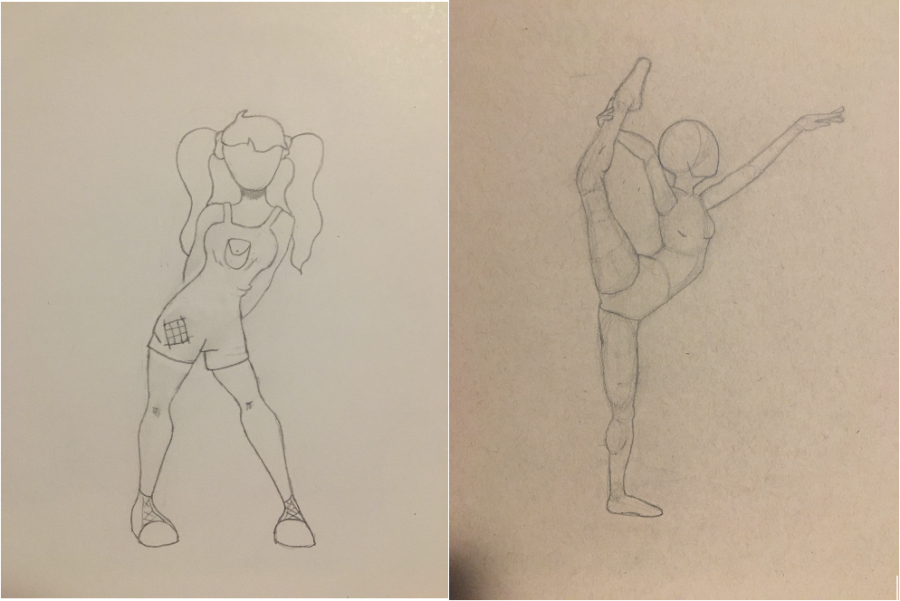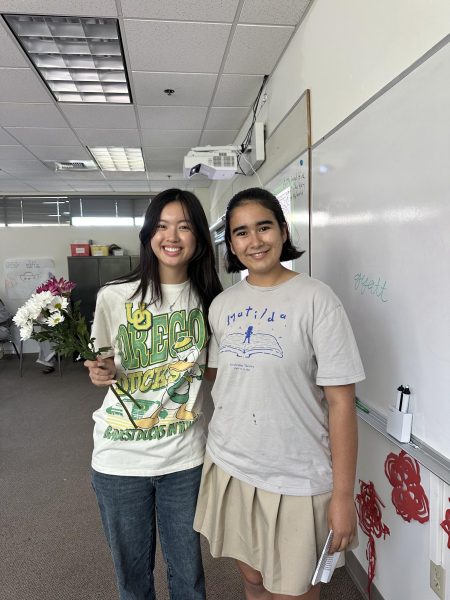Opinion: Boredom: The Catalyst for a Good Idea
The picture on the left is a drawing from the beginning of quarantine. As I’ve practiced drawing more, I’ve improved. The picture on the right is a drawing from this month.
I hated boredom. I used to try so hard to make it go away because, in the age of technology, entertainment is essential. If you told me two years ago that I would spend a year locked in my house, I would be shocked. How would I spend all of that time without getting bored?
But that’s exactly what happened. In a couple of short months, I quickly ran out of things to occupy my time during quarantine. I had developed and abandoned a Steven King phase, re-read the Harry Potter series, and, with nothing new on my bookshelf, I turned to Netflix. Unfortunately, that idea led nowhere as no show piqued my interest, even after an hour or two of browsing. I desperately looked for anything to do, but nothing came to mind. At one point, I turned to making pyramids out of cards. The tedious task of building and destroying the fragile structures quickly became frustrating.
As the one-year anniversary of quarantine approaches, I look back on this past year, and I’ve realized that I’ve learned a very valuable lesson: boredom is important.
Boredom has many benefits. According to an article from Time, when you’re bored, your brain tends to wander and daydream, which enhances creativity. Boredom can also improve mental health because the act of being bored and taking a break from stressors is beneficial. Also, while bored, the brain turns inward, reflects, thinks about the future, and sets goals. Boredom also forced me to think of creative ways to entertain myself.
I really enjoyed drawing and painting as a kid, but when I got older, I was too scared to try it because I worried that I wouldn’t be good at it. For that reason, I’ve stayed away from buying anything art-related. That all changed when I stumbled across a sketchbook on Amazon. When I discovered the sketchbook, I was brought back in time to when I was younger, the days of spending hours of glorious fun drawing little doodles and mixing pretty colors together. I sat there for a moment. My brain was desperate to relive the fun from the past–albeit terrified of failing to draw a picture. In the end, I knew no matter if I became frustrated, annoyed, or surprised, I would be experiencing an emotion other than boredom. I clicked “Add to Cart.”
As soon as the package arrived on my doorstep, I snatched it off the porch and tore open the box. Excited, I scampered throughout my house, grabbing snacks and colored pencils. Soon I was snuggled comfortably on my bed, the sketchbook open to the first page, ready for ideas and drawings to fill up the blank pages.
And then? Nothing. I sat there for a while, unsure of how to start, but I was determined to do something other than stare at a wall. So, I started drawing. The drawings were awful; it looked like a five-year-old had gotten their hands on a book and filled each page with shapes that looked vaguely like humans and other creatures. But I didn’t notice because I was so happy to be doing something. Ever since then, drawing has filled up all the extra hours I have when I’m not at school or working on homework. I’m already on to my second sketchbook, and I’ve improved a lot since my first drawing.
Since then, I’ve let my boredom lead me to try new video games, researching yummy recipes, and looking for near-by parks to hike in.
Boredom is rather unpleasant in the moment, but it forced my brain to think of creative ways to entertain myself. I didn’t realize it at the time, but boredom was pushing me outside my comfort zone. When I look back, I’m grateful, because, without boredom, I wouldn’t have discovered a new hobby.

















![Dr. Zanita Kelly, Director of Lower and Middle School, pictured above, and the rest of Westridge Administration were instrumental to providing Westridge faculty and staff the support they needed after the Eaton fire. "[Teachers] are part of the community," said Dr. Kelly. "Just like our families and students."](https://westridgespyglass.org/wp-content/uploads/2025/03/dr.-kellyyy-1-e1748143600809.png)














































